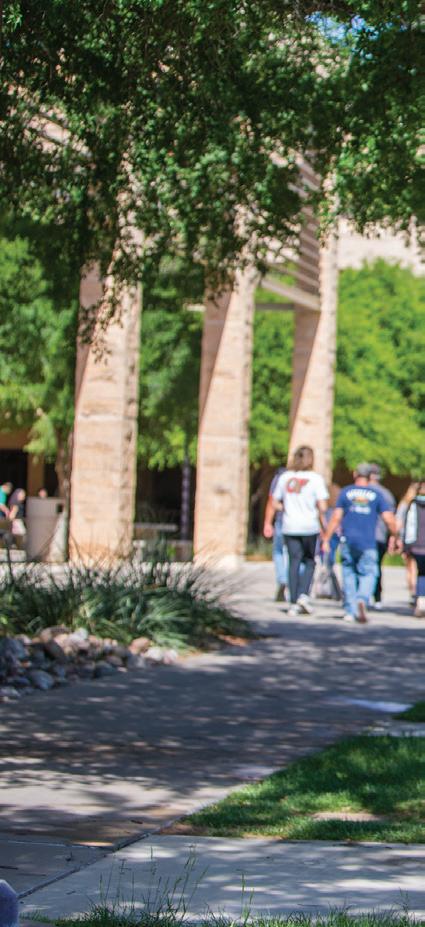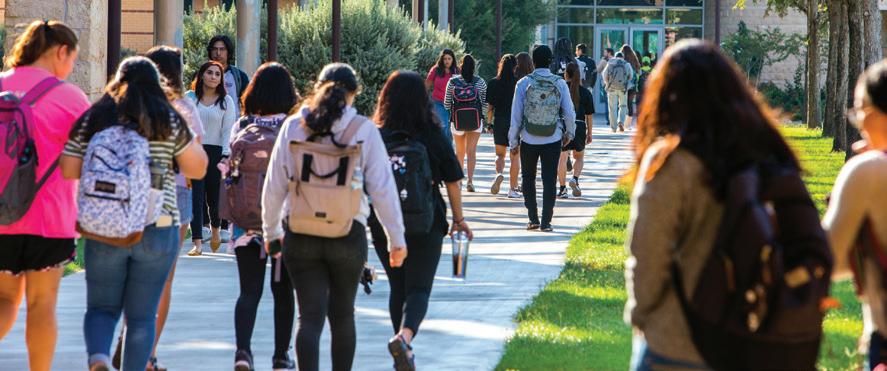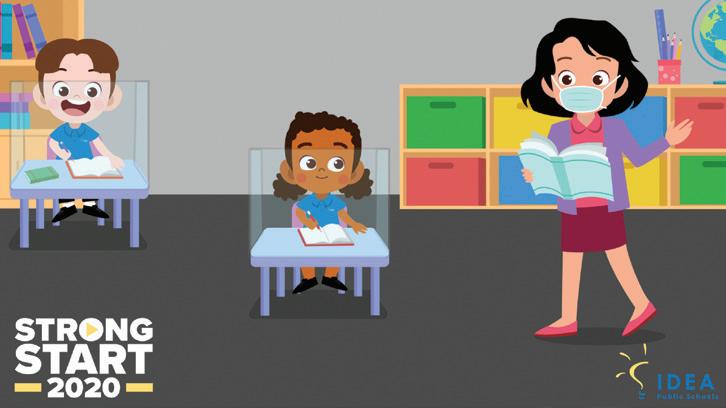
11 minute read
Sending Your Child Back to
SENDING YOUR CHILD BACK TO SCHOOL AMID COVID AND CHAOS
By: Carole Lieberman, M.D., M.P.H.
Advertisement
By: Carole Lieberman, M.D., M.P.H.
It’s natural for parents and kids to feel a little apprehension as the first day of the new year of school approaches. In past years, there may have been butterflies in the stomach about making friends, getting good grades, being popular, maybe even worries about school shooters or the dreadful drills. But, this year, there is even more to be apprehensive about. As parents drop off their kids, they may be wondering if they’re doing the right thing or if they’re putting their kids in danger during this time of COVID and chaos. Let’s look at some of the things parents can expect and pitfalls to avoid.
First of all, when parents drop their kids off at school, they can expect them to have more separation anxiety than ever, because kids have been used to being at home in lockdown, feeling protected by their parents, and the world they’re now venturing into on their own has become scarier. Unless parents have been explaining the news to them and answering their questions about COVID, the murder of George Floyd, protests, riots, looting, toppling of statues and so on, kids will be very confused and frightened about all that has gone on since they were made to leave school many months ago. They are likely to bombard their teachers with these questions, some of which parents may prefer to answer according to their own values.
Different schools may follow slightly different rules when it comes to what safety measures they adopt. Students’ reentry into socialization, after months apart, will be awkward. So, if they’re also made to wear masks and stay six feet apart, it will make their reentry even more challenging. Since it’s hard to tell what a person is feeling when they have a mask on, there won’t be social cues to help kids know whether other kids are reacting to them favorably or not. Yet, since many children will have underlying fears of catching COVID, they may appreciate these precautions.
Students’ reentry into their schoolwork is another challenge. Many will feel disoriented and disconnected from reading, writing and arithmetic—no less science, history and more difficult subjects. Some kids will have had very little instruction because ‘distance-learning’ was not very successful for the most part. Some
kids didn’t even have computers or had problems joining Zoom. Other kids were bored watching a teacher on the computer instead of in person. Many students had problems knowing what their assignments were and turning them in. So, most kids will feel lost and left behind if the teacher assumes the student has learned all the material from the previous year. Though schools and parents are eager to push students ahead, it would be best if parents kept their kids back a year—and even better if whole schools made the decision to have every child repeat the year to make sure that they have mastered the material.
These troubling times are affecting us all, so we need to look out for each other’s mental health and get help when needed. For example, kids who have spent their time in lockdown playing countless hours of violent video games will likely have become more aggressive and may have problems controlling themselves towards their classmates. Teachers should also be sensitive to signs that a student is depressed, is failing or has other signs of psychological problems—and should bring this to the attention of parents and school counselors. Meanwhile, we can all agree that there should no longer be school shooter drills because they were traumatizing enough—before the events of 2020—and would be even more traumatizing now.
About the author: Carole Lieberman, M.D., M.P.H. is a well known boardcertified Beverly Hills psychiatrist, parenting expert, and author — notably the awardwinning “Lions and Tigers and Terrorists, Oh My! How to Protect Your Child in a Time of Terror.” She was trained at NYU-Bellevue and at Anna Freud’s London Clinic and served on the Clinical Faculty of UCLA’s Neuropsychiatric Institute. Dr. Carole testifies at trials as a forensic psychiatrist/expert witness and is a three-time, Emmy-honored TV personality who has appeared on Oprah, the Today Show, Good Morning America, CNN, Fox News, HLN, ET, ABC, CBS, NBC and many more. www.drcarole.com, www. terroristtherapist.com, www. expertwitnessforensicpsychiatrist.com
By: Alexa Dunson, UT Permian Basin Communications Manager
We’re only halfway through the year, but 2020 can be summed up simply: the year of uncertainty. It’s hard to believe that just three months ago most of us were busy binge-watching Tiger King and had probably never heard of coronavirus. Now we can’t turn on the TV or surf the internet without seeing the latest spike in COVID-19 numbers, head into the grocery store without wearing a mask or even find toilet paper.
Most of us are searching for one thing: predictability. That’s exactly what universities are trying to provide as we approach the August start date, but it’s no easy task.
Like most other schools, The University of Texas Permian Basin (UTPB) is trying to craft policies that minimize the risk of coming back to campus while providing that traditional collegiate experience. College campuses have many things to consider when it comes to navigating the unprecedented reality that comes with a global pandemic. The list includes everything from class sizes, housing arrangements, food service, athletics, oncampus events, faculty and staff safety, and so much more.
“During this uncertainty, our University has learned so much about our capabilities, and we’ve made adjustments along the way. The tools and innovations we have put in place have really prepared us for what lies ahead,” said UT Permian Basin President, Dr. Sandra Woodley.
When students left campus for spring break in March, we had no idea they wouldn’t return for the spring semester. You can imagine the questions that rolled in. To be honest, we didn’t have all the answers. But we did know one thing: the health of our students, faculty and staff comes first. We put a plan in motion and finished strong, offering all instruction completely on-line. UTPB never missed a beat!


So what does Fall 2020 look like for the University? When students, faculty and staff walk back on campus they’ll be required to wear masks. New signage will encourage social distancing. For those living on campus, housing staff will assign roommates by using the “pod” method, meaning roommates are assigned based on similar academic disciplines or athletic teams. Should a student become sick, isolation rooms will be in place to slow a potential spread.
A majority of our classes will be conducted in a hybrid format. For example, if a student has a Monday/Wednesday class, he or she will attend class in person one day and online the other day. This will cut back on class sizes significantly. For the courses that must be held in person, like clinicals or labs, social distancing will be enforced. Extra cleaning precautions will be visible across the campus.
As for dining services, take-out will be available and self-serve options will be removed. On-campus events will be permitted


with attendee limitations and all students will have to register for events so the University can conduct contract tracing if necessary.
“UT Permian Basin is truly made up of an amazing community. Resiliency and an innovative spirit are part of what makes being a Falcon so special,” President Woodley added. “We are ready to welcome students to our campus, but we will also be diligent about adhering to safety protocols.”
Although the semester ahead will look different, our commitment to providing a quality education remains the same. We know that having an on-campus collegiate experience is important even as we carefully navigate the everchanging COVID-19 pandemic. We look forward to welcoming our students back on campus this fall. After all, there’s not much better than a campus full of students beaming with University pride.
ABOUT THE UNIVERSITY OF TEXAS PERMIAN BASIN:
The University of Texas Permian Basin is part of the worldrenowned University of Texas System. Our University is changing, growing and most importantly— providing a quality education at an affordable cost. UTPB is the perfect size—small enough to offer personal interaction with professors and leadership opportunities across campus, while big enough to deliver a quality education and professional opportunities after graduation.
About the author: Alexa Dunson is the Communications Manager for The University of Texas Permian Basin.
START STRONG 2020: BACK TO SCHOOL HEALTH AND SAFETY PROTOCOLS AT IDEA PUBLIC SCHOOLS
Special to SHALE
The safety, health and well-being of every IDEA scholar is always our top priority. As we gear up for another great year of learning, in light of COVID-19, IDEA has developed a robust assortment of new safety and health protocols to ensure all students and families feel confident returning to their respective campuses.
To ensure IDEA is prepared to meet the highest safety standards and meet the expectations of families, IDEA consulted with local state and county health officials in addition to conducting several surveys to aid in the planning and implementation of procedures for the new school year.
Based on over 400 focus-group participants, over 4000 bilingual-survey respondents and leading research from the CDC and state health departments, IDEA has established protocols that all teachers, staff, students and parents will be required to adopt to ensure IDEA is prepared to meet the highest safety standards to help safeguard students and staff from COVID-19.
The results are an approach that encompasses personal protective equipment, updated school procedures and protocols, and safety upgrades to campus buildings.
Beginning in August, the following practices will be put into action and deployed on each IDEA campus:

Students who physically come to school will…
Be provided with two reusable cloth masks
Will wear masks when in public spaces (like hallways)
Will stay in the same group & classroom throughout the day
Eat all meals inside the classroom
Receive physical education modified for social distancing Learn at desks equipped with Plexiglass desk guards and positioned six feet apart from each other
Teachers will…
Rotate from classroom to classroom in uppergrade levels (excluding pre-K to 2nd grade) Ensure active-learning and handwashing breaks occur throughout the day Wear masks when delivering 1:1 instruction but will be able to remove them during wholeclass instruction
IDEA has invested in equipment designed to protect students and staff from exposure to infection or illness. Hand hygiene stations will be located at each point of entry and in every classroom. Floor decals and signs will emphasize safety requirements, and restroom fixtures will be retrofitted with auto-flush kits. New campus entryways will also be established to avoid crowding and expedite campus pick-up and drop-off procedures.
IDEA will also update school arrival, dismissal, and transportation procedures. Arrival and dismissal windows will be extended, with staggered arrival and dismissal times for families. Upon arrival, all staff and students will undergo health screenings—including temperature checks with no-contact thermometers—and visit hand-hygiene stations.
“Our dedicated team is working around the clock to make the transition for students, staff and families as smooth as possible. Every protocol, practice and procedure has been evaluated and adjusted as needed to ensure a safe and strong return to classrooms this fall,” says Layne Fisher, IDEA’s Vice President of Auxiliary Services.
IDEA also announced a plan to ensure each scholar receives access to learning by equipping them with a laptop, computer or tablet for the 2020-2021 school year, at no cost to families. Dubbed IDEA’s 1:1 Program, the program will facilitate direct access to teachers and classwork and keep all scholars on track regardless of where the learning itself is taking place
As schools embark on a new school year, it is more important than ever for families and campuses to improve cooperation and communication. By practicing safety measures at home, speaking to children about what to expect during the school year and why, and exercising patience as schools adjust to new schedules and procedures, together we can all make this school year a great success.
This year may present some unique challenges—our end-goal will always be the same: healthy bodies, healthy minds and happy students.
For more information on IDEA’s safety measures, please refer to IDEA’s Back to School webpage: www.ideapublicschools.org/ back2school2020.










